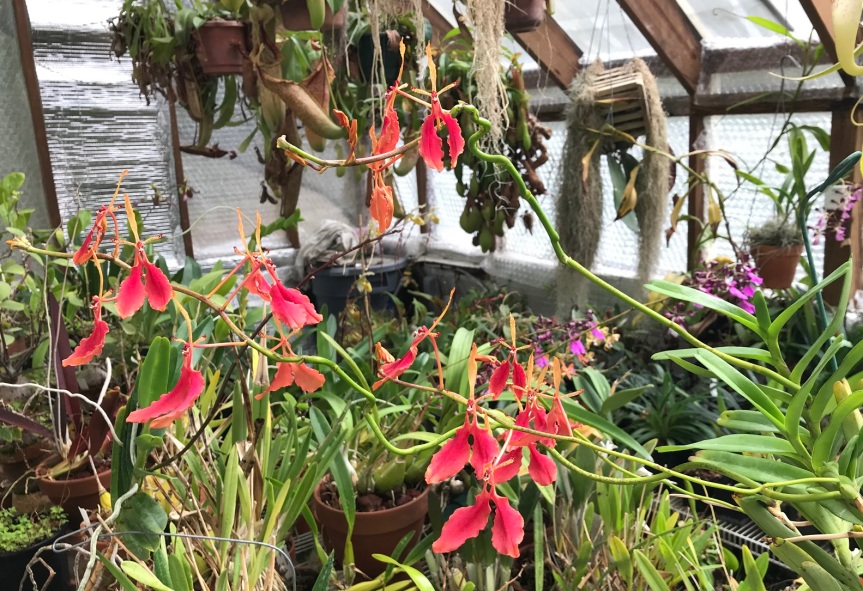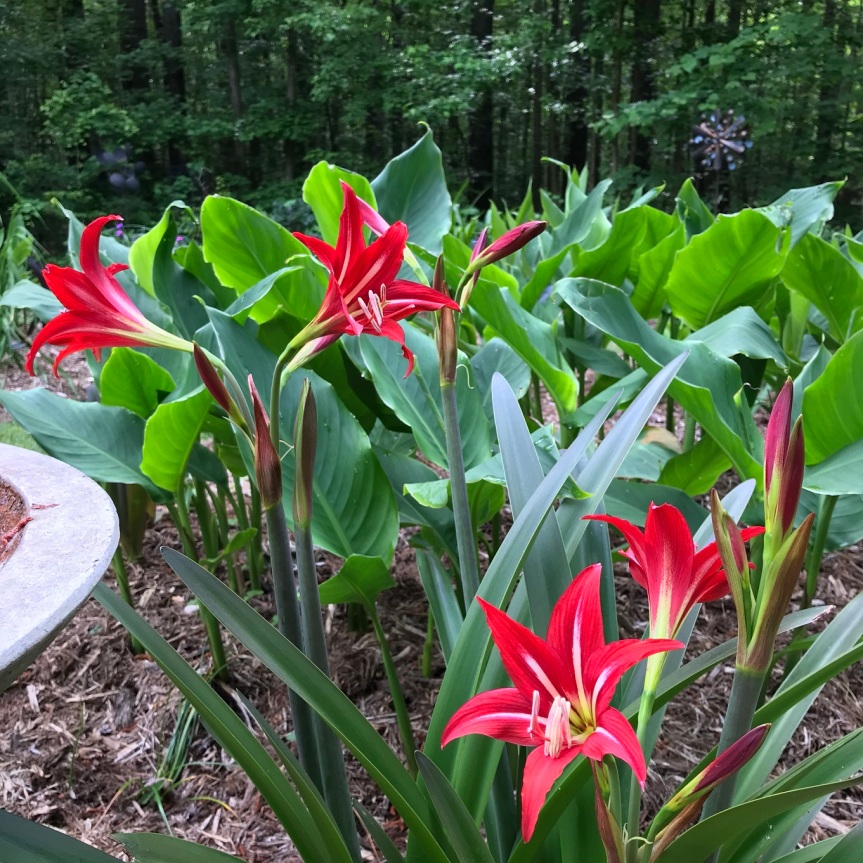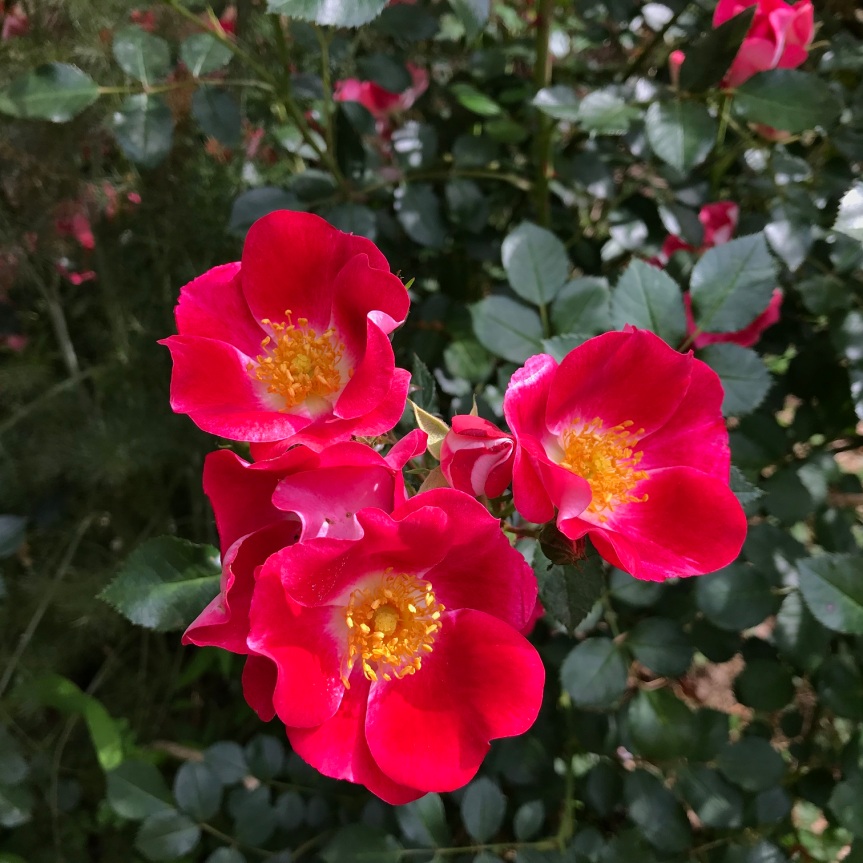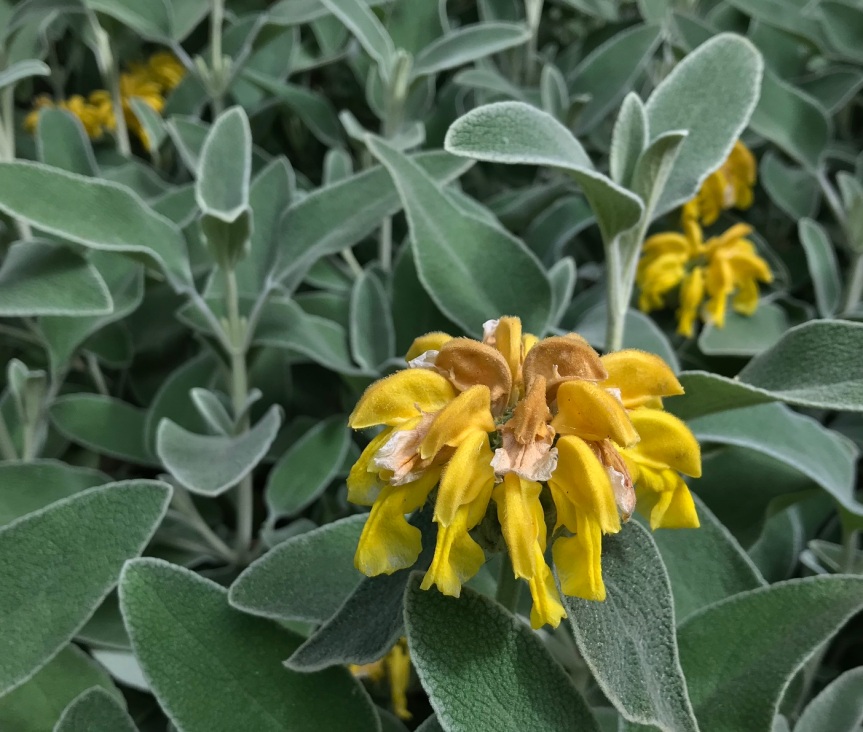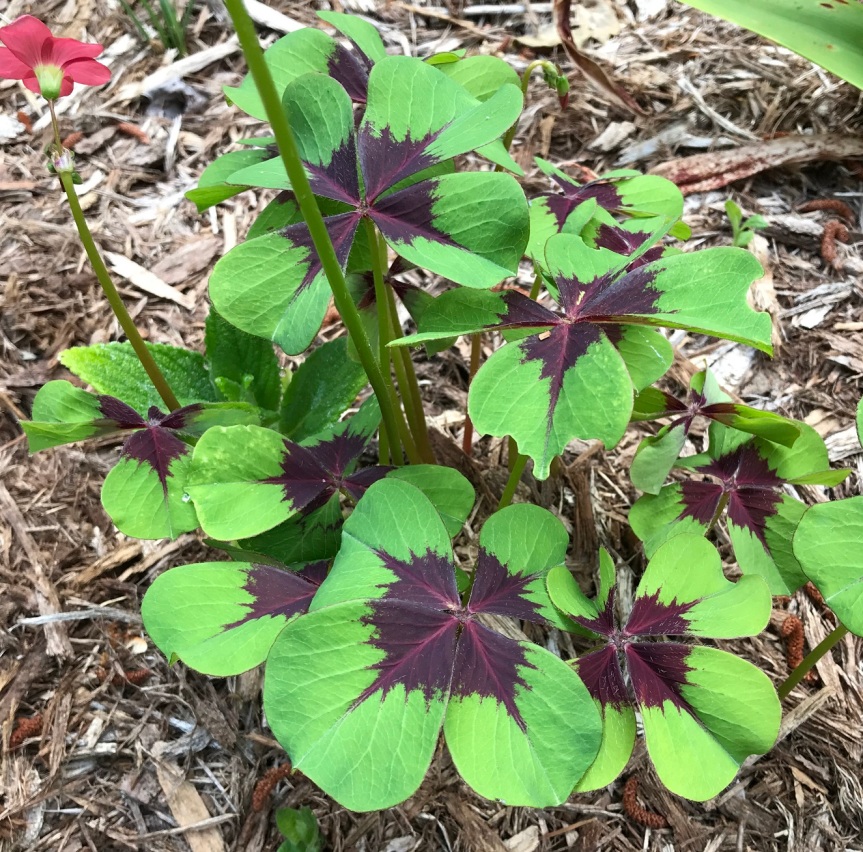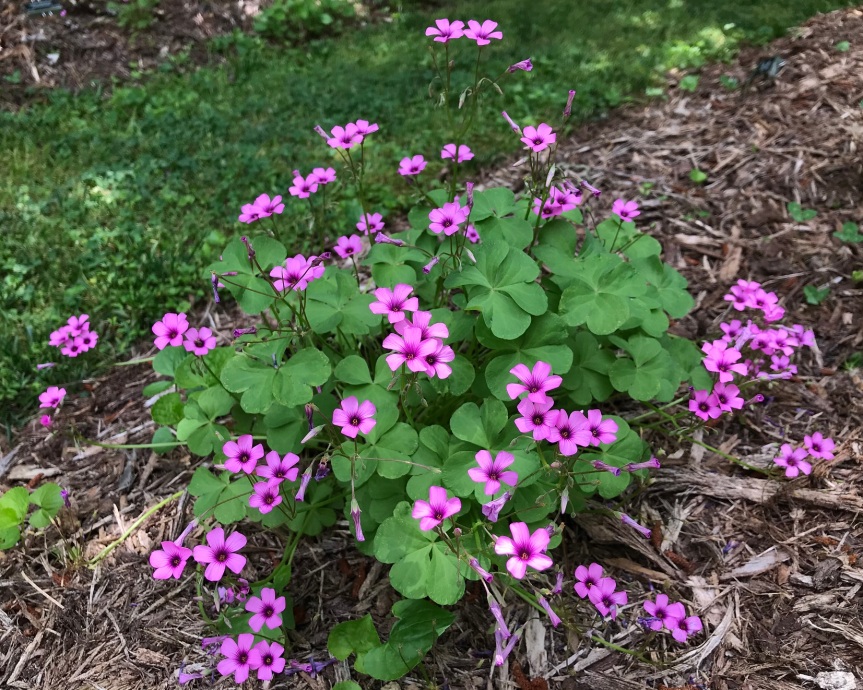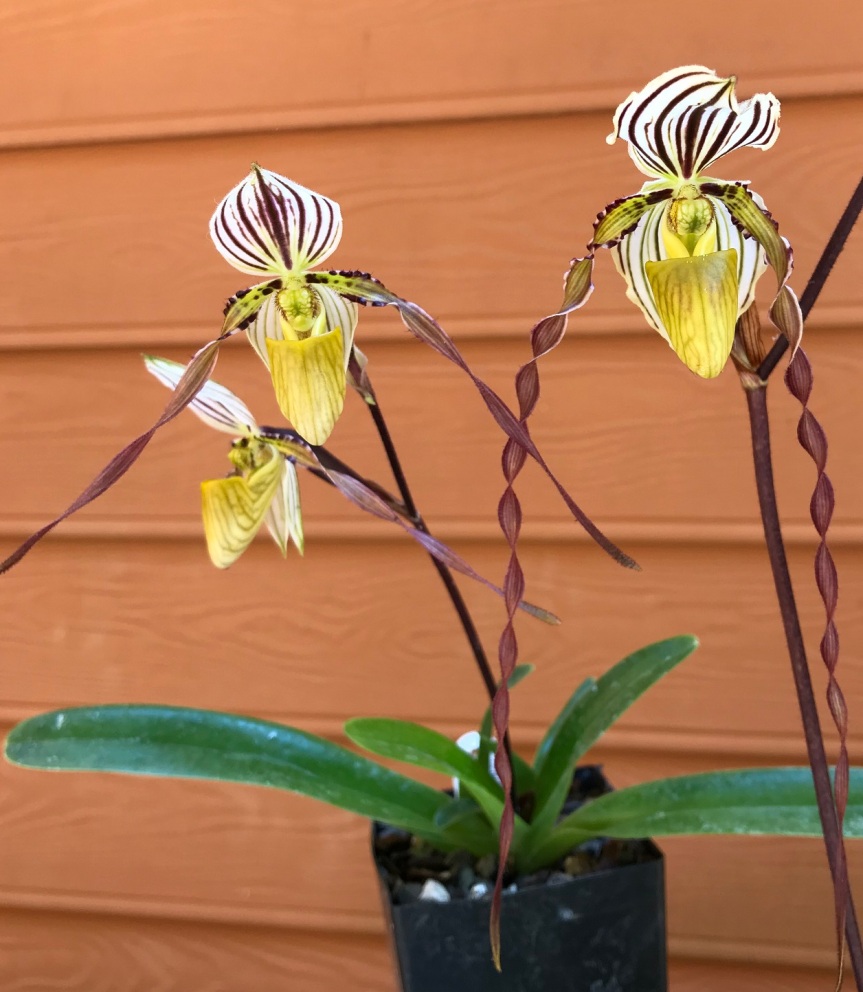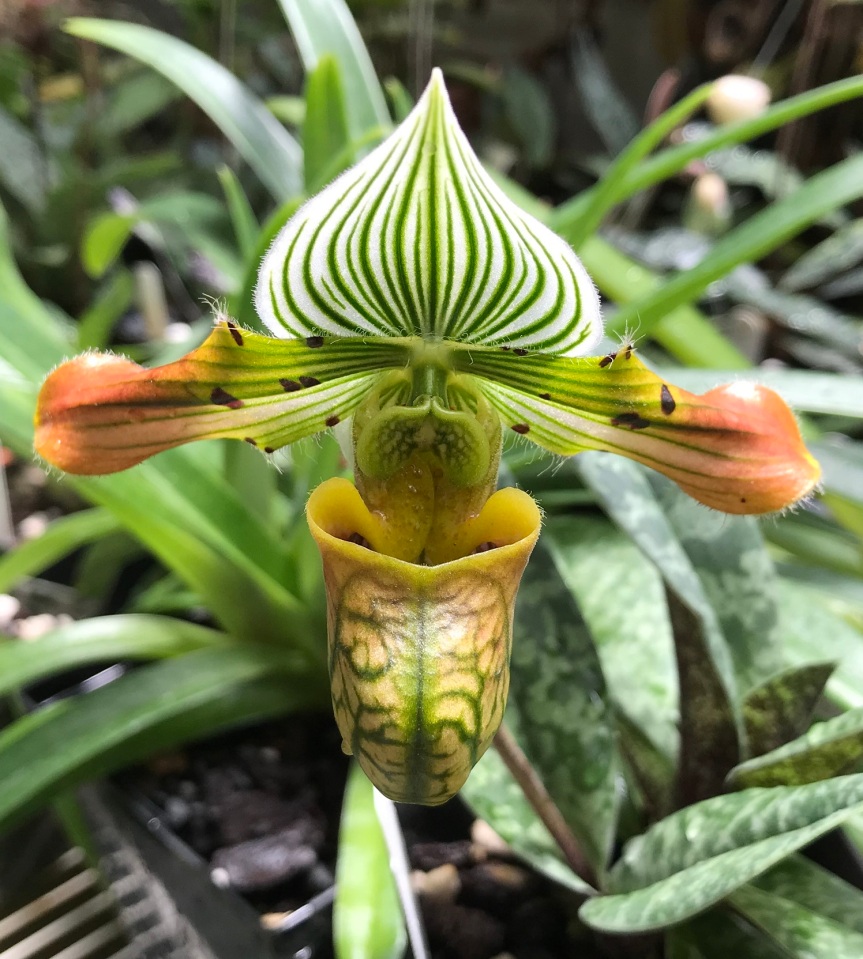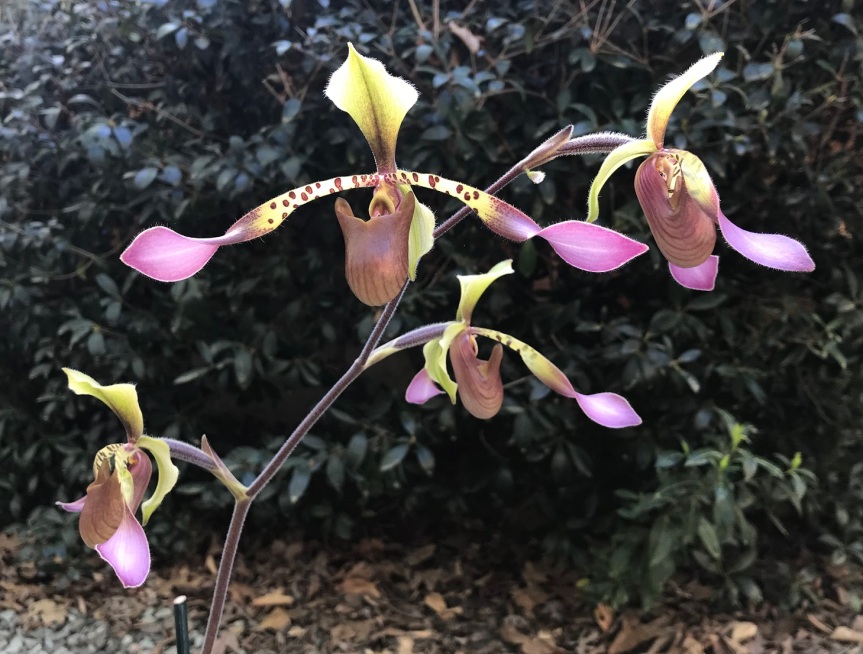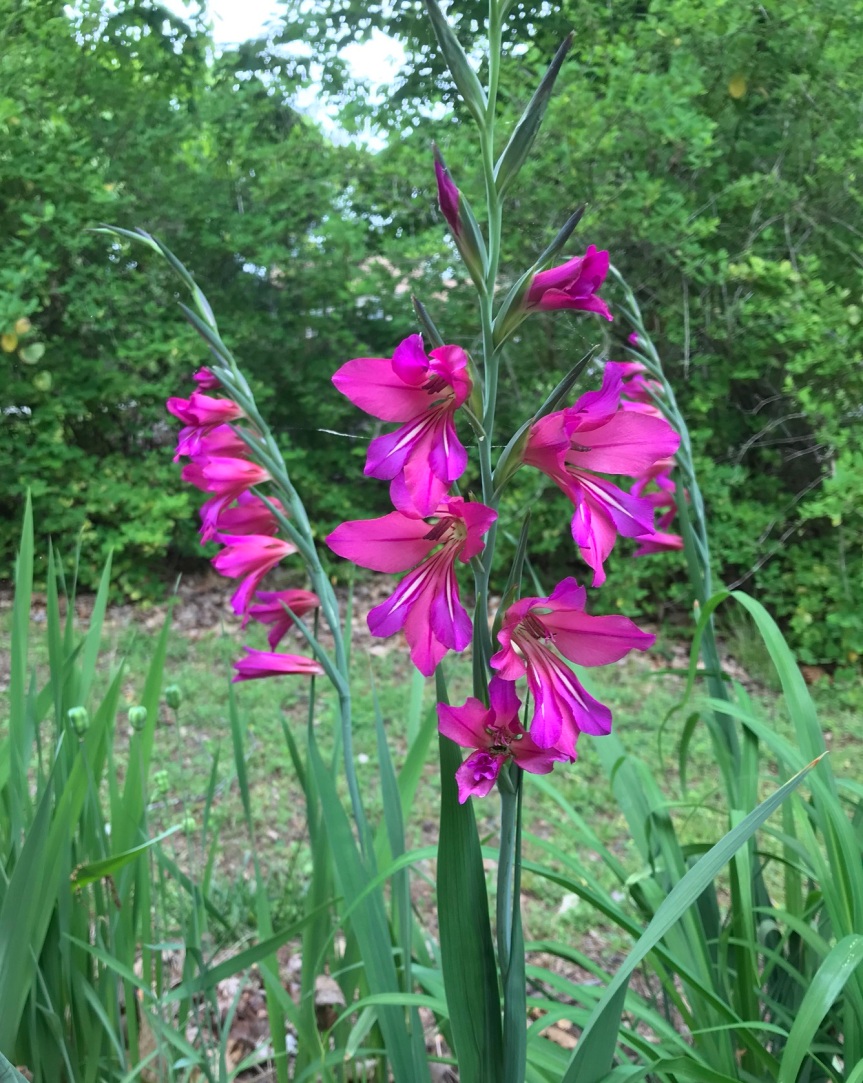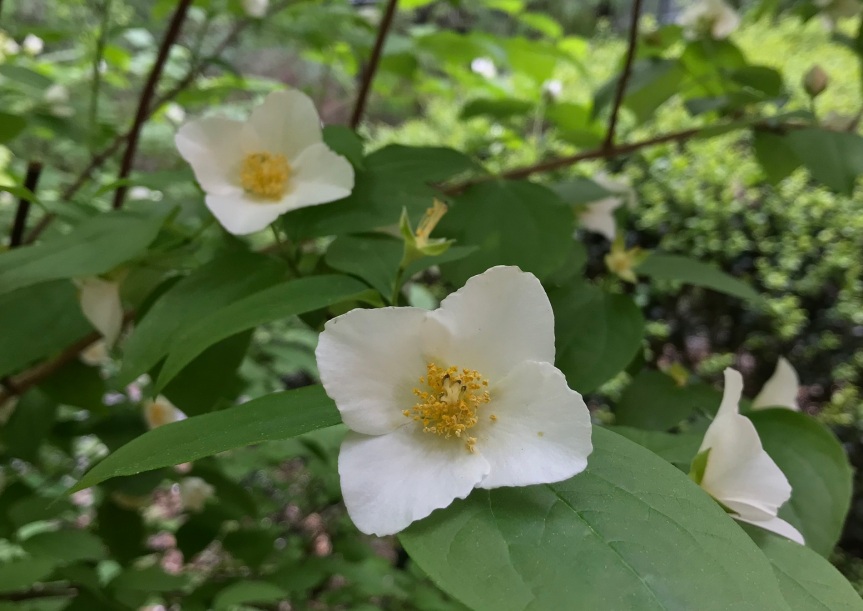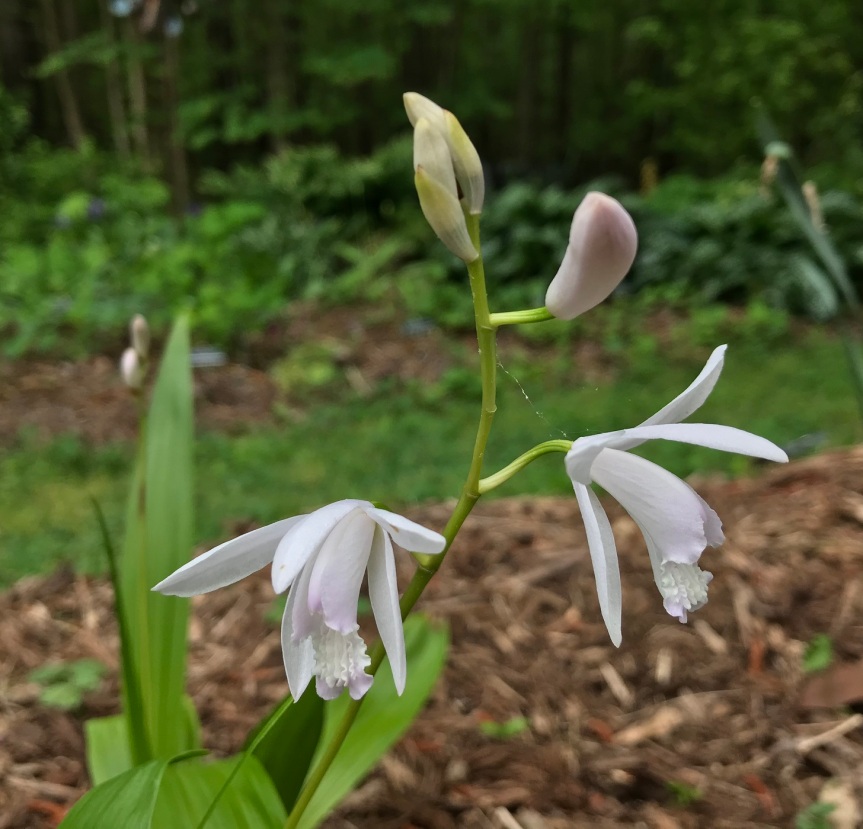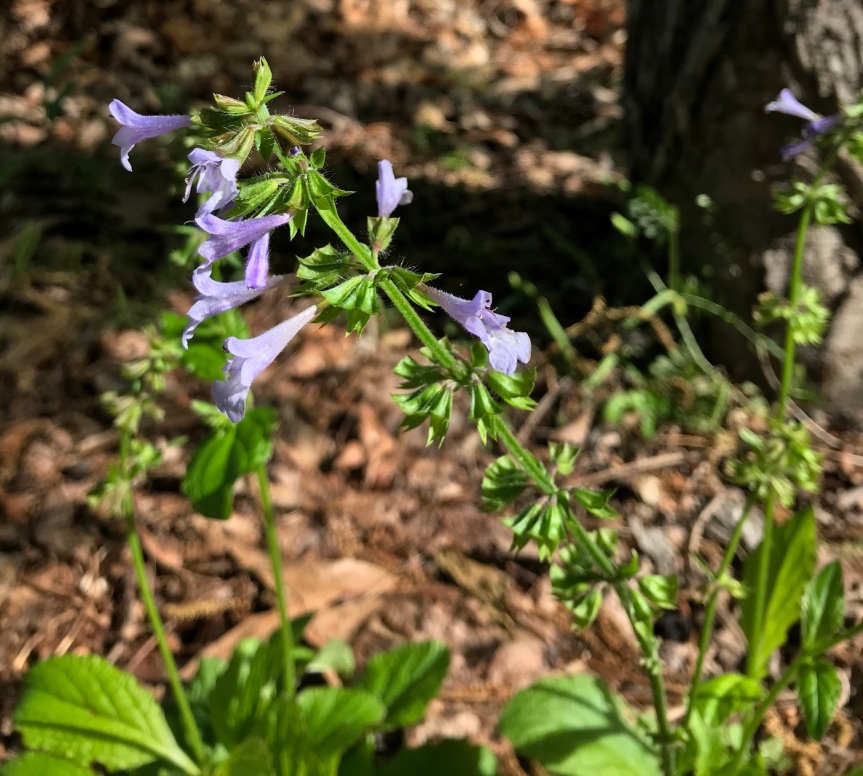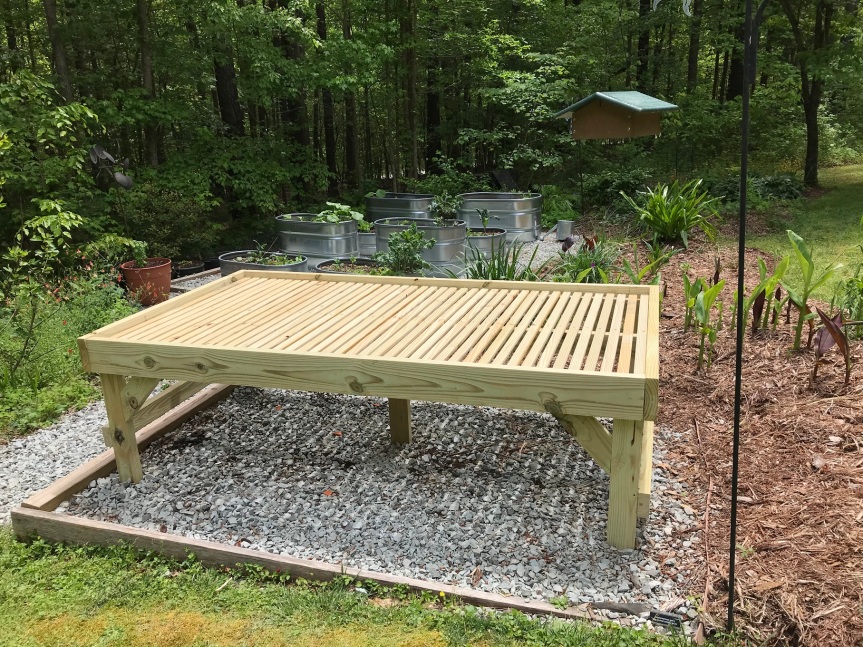
Depending on how I do the math, I have been waiting to see these flowers for eight years, or just over twenty five years. Back in the mid 1990s, when I first started growing orchids, I purchased a seedling of Renanthera imschootiana ‘Saigon’ x self to grow under fluorescent lights in my student apartment in Michigan. Orchid growers will recognize that it was a poor choice for my growing area; Renanthera species and hybrids require high humidity and very bright light–up to full tropical sun. After a few years, I came to the same realization and sold the plant to make room for something I had a chance of flowering.
Fast forward to about 2005. I now lived in North Carolina and had a greenhouse where I could give large orchids much brighter light and higher humidity. I still loved red flowers, and the very rare R. imschootiana has a certain mystique. I decided to try growing the species again
But I couldn’t find a plant to buy. This isn’t uncommon if you go searching for one particular orchid. There are about 28,000 orchid species and hundreds of thousands of registered hybrids, so only a tiny fraction are in commercial production at any time. Someone flasks a batch of seedlings, and that species is available for sale until they run out. Then, the species may be virtually unobtainable, unless you know a grower who will give you a division, until someone else produces a new batch of seedlings.
Finally, in 2012, I purchased a seedling of R. imschootiana ‘Newberry’ x ‘Saigon’ from Carter and Holmes Orchids. That one of the parents of the new seedling was the same as the parent of my old seedling probably speaks to the small gene pool of cultivated plants in the U.S. (Carter and Holmes doesn’t seem to have plants for sale any more, but I see that seedlings are available from Santa Barbara Orchid Estate).
So, about the plant: R. imschootiana (Assam, northern Indochina, Yunnan) is a relatively small species in terms of leaf-span, although it can grow tall with time. It is basically a slow-motion vine, taking ten years to grow the distance that a honeysuckle vine could grow in a week, but it eventually grows long enough to need support. The main stem occasionally branches, and the roots and inflorescences grow from leaf axils at random intervals. My plant is potted in a 4″ terracotta pot filled with large chunks of scoria (red lava rock). When it got top heavy, I put the 4″ pot in a 6″ pot, and roots have filled the space between the pots. The vining stems are supported by several stiff wires.

After a few years in my greenhouse, the plant sprouted a stem that resembled an inflorescence, but instead of flowers it produced a single terminal keiki (plantlet). The next year, the same thing happened, and the year after. Many of the Renanthera species and hybrids more common in cultivation are lowland tropicals that grow well in a warm greenhouse, but R. imschootiana is from higher elevation and is noted for tolerating winter temperatures near freezing. Suspecting that the plant was too comfortable with a minimum temperature of 60 F in my greenhouse, I left it outside during the autumn of 2018 until temperatures dropped to near freezing. I then put the plant on the floor of the greenhouse near the door and reduced watering so that it stayed cool and dry for much of the winter. Whenever the weather was dry and above freezing, I put it back outside again. Result: nothing. Last winter, I just left the plant on a bench in a sunny part of the greenhouse and watered it along with all the other orchids. Result: four inflorescences.
So, ~1995-2020 = 25 years. 2012-2020 = 8 years. Either span is a long time to wait. I just wish I knew what induced the plant to flower this year.
